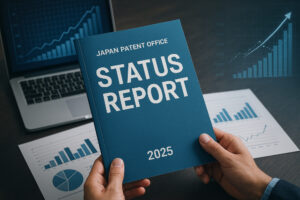To help you better understand the Japanese utility model system, we provide basic information about the Japanese utility model system.
The Japanese utility model system is designed to protect devices and tools with a lower threshold of inventiveness compared to patents. It offers a more straightforward and quicker process for securing intellectual property rights. Here are the key points about the Japanese utility model system.
Scope of Protection
The utility model system in Japan protects subject matters related to the shape, structure, or combination of articles. It does not cover methods, programs, processes, or chemical substances, which are typically covered by patents.
Application Process
The application process for a utility model is relatively simpler and faster than that for patents. Applicants are not required to undergo a substantive examination for utility models. Instead, the Japan Patent Office (JPO) conducts a formal examination to ensure that the application meets the basic requirements.
Term of Protection
The term of protection for a utility model in Japan is 10 years from the filing date. This is shorter than 20 years for patents.
Examination and Registration
Unlike patents, utility models do not undergo a substantive examination before registration. The registration process is faster (registered in a few months) because it involves only a formality check. However, the validity of a registered utility model can be challenged by third parties through a request for an examination report from the JPO.
Enforcement
While utility models provide a quicker route to registration, their enforcement requires caution. Before initiating an infringement lawsuit, the right holder must obtain an examination report from the JPO to support the validity of the registered utility model. The examination report is a kind of an office action containing reasons for refusal and cited references. This examination report is crucial as it provides an official assessment of the validity of the registered utility model.
Furthermore, the right holder must provide a warning letter to an infringer together with the examination report on the validity of registered utility model before the enforcement based on the utility model right. The holder is also liable to compensate for damages of the infringer caused by the enforcement in a case where the utility model right is made invalid after the enforcement.
Advantages and Disadvantages
The main advantage of the utility model system is its speed and cost-effectiveness. It allows Applicants to quickly secure protection for their utility models.
Meanwhile, the primary disadvantage is that it is more difficult to enforce utility model rights compared to patent rights. Since utility models are registered without substantive examination, they are often considered less robust, and their validity can be more easily challenged.
Conclusion
The Japanese utility model system provides a valuable tool for protecting technical improvements and innovations that may not meet the higher inventiveness criteria required for patents. It offers a quicker and less expensive way to secure intellectual property rights, but with certain limitations in terms of enforcement.
For more information on Japanese utility model applications, please refer to the following page.










